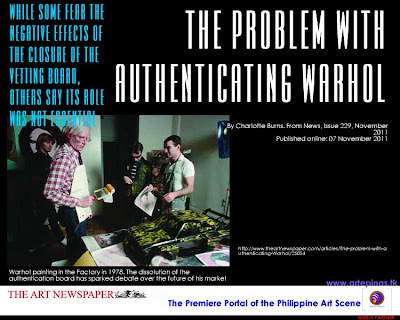
Enzo Camacho/ Amy Lien:
Witnesses in the Garden
Republikha Art Gallery
November 12 - December 3, 2011
You will find yourself amongst several bamboo poles standing rigidly alert. Set into flaming cubic bases, their surfaces reveal a plethora of careful adornment. Although they share some basic features, they each retain a whatever singularity. Together, they form a provisional self-regulating society, a small multitude held together by a sculptural vocabulary that is intentionally scattered. The use of a clip-on electric fan and citronella candles represents an attempt at glamorizing the inconveniences of tropical living. One pole has been outfitted to function as a monopod for a small video camera, and will be put to work in the service of documenting the exhibition opening. The application of dried mushrooms constitutes a borrowed gesture, an unauthorized extension of the recent studio practice of Mathieu Malouf, a New York-based friend of the artists, who is also an avid blogger (http://jerrymagoo.blogspot.com/). These mushrooms proliferate, even in death.
A closer look at the poles reveals a series of rolled-up lambda prints. These images document a performance that took place this past summer in the Sculpture Garden of the Museum of Modern Art in New York, following an invitation from the artist collective Grand Openings (http://www.reenaspaulings.com/MoMAblog.htm). Handling a wooden sculpture that they had commissioned from an artisan carver in Baguio City, the artists conducted a flash in the pan tour during which they maneuvered around the garden, facilitating socialization between this sculpture and MoMA’s most durable works. In the images on view, it is seen interacting with Joan Miro’s Moonbird (1966). The photographs clutch the poles’ surfaces with a type of anxiety induced by traveling faster than you can think. Appropriately, they are secured with Velcro, like sportswear accessories.
A dense accumulation of text encircles the bamboo grove, providing yet another grounds for contemplation. The text comprises an interview conducted by Amy Lien with art historian Patrick Flores, which took place this past September during a rambling stroll through Central Park, while Flores was in New York to participate in discussions for the Asian Art Council, convened by the Guggenheim. Patrick D. Flores is Professor of Art History, Theory, and Criticism at the University of the Philippines at Diliman, and is the Curator of the University of the Philippines Vargas Museum and Adjunct Curator of the National Art Galleries of the Philippines and Singapore. Flores has organized several national and international platforms, and is the author of numerous articles and several books concerning Philippine art, including Painting History: Revisions in Philippine Colonial Art (Quezon City/Manila, 1998), Remarkable Collection: Art, History, and the National Museum, (Manila, 2008) and Past Peripheral: Curation in Southeast Asia, (Singapore, 2008). The interview covers a broad expanse of Philippine art history, and delineates certain fractures within the Philippine art community. It will be transcribed directly onto the gallery walls by hired hands during the exhibition opening.
Bearing witness to this writing of history, the bamboo poles can no longer claim naïveté as their style of choice.
Enzo Camacho (b. 1985, Philippines) and Amy Lien (b. 1987, USA) are collaborating artists who currently live and work in Metro Manila and New York, respectively. They both received their undergraduate degrees from Harvard University, with Lien graduating in 2009 and Camacho in 2007. Their individual and collaborative work has been included in group exhibitions at Bortolami Gallery (New York), Galerie Crone (Berlin), Green Papaya Art Projects (Quezon City, Philippines), Light and Space Contemporary (Quezon City, Philippines) and the Jorge B. Vargas Museum (Quezon City, Philippines), among others. Earlier this year, they had a solo exhibition at 47 Canal and a performance at the Museum of Modern Art, both in New York.












































































































































































































